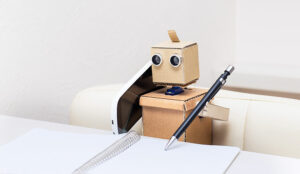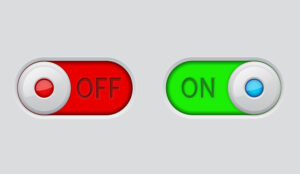In this article, James Dodkins, CX Evangelist at Pegasystems, explains the emerging customer everyone needs to start thinking about today.
This new customer, dubbed the ‘Machine Customer’, will become more prominent and will add two NEW types of customer interactions into all future business planning.
What Are Machine Customers?
Businesses have been relying on self-service tools such as IVR and chatbots for some time now, as a way of not having to talk directly to their customers.
But the truth is, customers don’t really like talking to businesses either, and that’s where the Machine Customer comes in.
A Machine Customer is defined by a machine taking the place of an actual human customer to get something done. For example, AI-enabled digital assistants that complete the tasks a human asks of them.
Machine Customers Are Pretty Much Already Here
This is not some sort of future thing either. There are already several examples of digital assistants doing things for people – from asking Siri to set an alarm, or Google Assistant to sit on hold for you, right through to asking Alexa to reorder guitar strings.
Whilst these aren’t strictly Machine Customers, as they are digital assistants interacting with their own systems, it isn’t too far off.
In fact, it’s the moment a digital assistant interacts with another company directly that they switch to being a Machine Customer. A good example is your electricity bill being accurately calculated and paid in real time via a smart meter.
Are customers ready for this? Certainly!
As a society, we’ve already been sharing data in return for convenience for years. It’s the norm for many of us to have a smartphone with everything from email to online banking and Amazon ordering – all in one place.
Embracing the potential of Machine Customers therefore isn’t too much of a mental leap for customers, but it is for businesses.
There Are Two Types of Machine Customers
Businesses will have to make a profound shift to accommodate Machine Customers in the near future. Fundamentally, the rise of the Machine Customer will change the types of interactions contact centres have to cater for.
Currently, there are just two types of company/ customer interactions:
- Person to Person (P2P) – A human calling up and speaking to another human.
- Person to Machine (P2M) – A human interacting with a self-service chatbot.
However, there are now a further two types of company/customer interaction to consider:
- NEW Machine to Person (M2P) – When a digital assistant (robot) calls up a company on behalf of a human and speaks to a human to get something done.
- NEW Machine to Machine (M2M) – When a human asks their digital assistant to change the payment date for their phone bill (for example), and then the digital assistant interacts with the phone provider’s system to complete the task autonomously – without any need for human intervention.
Foreseen Challenges to Watch Out For
Security Issues
Security is a massive hurdle in the adoption of Machine Customers. Imagine a friend coming over and jokingly changing the last name on all your accounts, or worse still, a malicious attack changing all your passwords.
This simply can’t be allowed to happen.
To overcome this, it’s likely we’ll see existing security processes applied here; for example voice biometrics, or two-factor authentication (2FA) to maintain confidence in the use of Machine Customers.
Losing Customers to Better Prepared Competitors
This is going to be the next big competitive landscape for businesses.
Recent research from Gartner has shown that by 2025, 37% of customers will try using a digital assistant to interact with customer service on their behalf, and CEOs and CIOs believe that a fifth of revenue is going to come from Machine Customers.
This will be a disadvantage for companies who get left behind, as human customers will quickly realize that only certain providers cater for Machine Customers.
The convenience of this may very well impact their future purchasing decisions too – especially for phone, energy and insurance providers (to name a few) where there is a lot of choice in the market.
Relying on Machine Customers for Every Interaction
There is also the risk that businesses will go too far with Machine Customers and rely on them for every interaction.
Can you imagine a world where a Fitbit doesn’t detect a heartbeat for 15 minutes and automatically triggers a life insurance policy claim? It’s just ludicrous.
Machine Customers should not be a replacement for Person to Person (P2P) interactions, but instead should complement them.
How do you decide what transactions are suitable for Machine Customers?
It can help to think of two different types of customer experiences:
- Transactional Experiences – e.g. Changing an address or making a payment.
- Emotional Experiences – e.g. Making a claim on a life insurance or funeral policy.
There’s a lot of potential for Machine Customers to take care of transactional experiences, freeing up agents’ time to give better care and attention to emotional experiences. All of which can help save time and money – without compromising the overall customer experience.
What Impact Will Machine Customers Have on the Future of CX?
New Standards and Expectations Around Customer Service
This shift is going to fundamentally reset every single standard of what a good customer experience means. There will be a new standard for easy, a new standard for fast, and a new standard for convenient.
It will also shift the focus away from empathy and other soft skills – as Machine Customers simply aren’t going to care how empathetic a customer service agent is.
For more information on how to provide good customer service, read our article: The 26 Principles of Good Customer Service
Reimagined Processes
Machine Customers will also push the boundaries on consumer behaviour.
Processes will be reimagined as customers come to expect a fridge that orders milk when it’s running low, the washing machine that schedules its own repair, the car that orders new tyres and then schedules for them to be fitted.
Here are the key phases Gartner predicts will emerge in the years ahead as customers and businesses become more reliant on Machine Customers:
1. Bound Customer (today) – Purchases specific items as defined by rules
Clearly Defined Choices: Human Leads, Thing Executes
2. Adaptable Customer (2026) – Makes optimized selections among competing products based on rules
Competing Choices: Shared Lead, Thing Executes
3. Autonomous Customer (2036) – Infers customer needs based on rules, context, and preferences; also has its own needs
Inferred Needs: Thing Leads and Executes
New Job Roles
As Machine Customers become the norm, it will also challenge the role of the typical agent.
It’s unlikely to be the case that fewer people will be needed, but new skills will be.
It could even create new job titles, including ‘Machine Customer Manager’, offering new opportunities for those potentially displaced from a traditional customer service support role.
How to Start Preparing for Machine Customers

It’s very exciting to be witnessing the emergence of a whole new profession – even a new industry. This is all good news, as it’s going to allow businesses to deliver much better experiences, at a much lower cost – but thorough planning is key.
Here are 3 steps to help you get started with managing Machine Customer interactions:
1. Prepare
Start by exploring all the likely scenarios where Machine Customers might interact with you, then rank them in a timeline from ‘most likely to happen soon’ to ‘least likely to happen soon’. Also look at the impact on service and cost savings for each.
2. Create a Roadmap
Figure out who is going to own these interactions in your business. Is it going to be IT, or Customer Service, or do you need a new Machine Customer Management discipline or even department?
3. Make Your Person-to-Person (P2P) Interactions Count
Also make sure that when a customer finally gets to speak to a real person, your team gives them the care and attention they can’t get from a machine yet.
Video: The Rise of the Machine Customers
Watch the video below to see James explain some of the points made in this article:
Written by: James Dodkins, CX Evangelist at Pegasystems
To learn more about technology and customer service in contact centres, read these articles next:
- Trends Transforming Cloud Contact Centres
- What Are the Key Call Centre Technologies?
- The Dos and Don’ts of Automated Assistants in the Contact Centre
Author: Robyn Coppell
Reviewed by: Hannah Swankie
Published On: 16th Nov 2022 - Last modified: 21st Oct 2025
Read more about - Customer Service Strategy, An Introduction to Contact Centres, Customer Experience (CX), Customer Service, Editor's Picks, Service Strategy










































